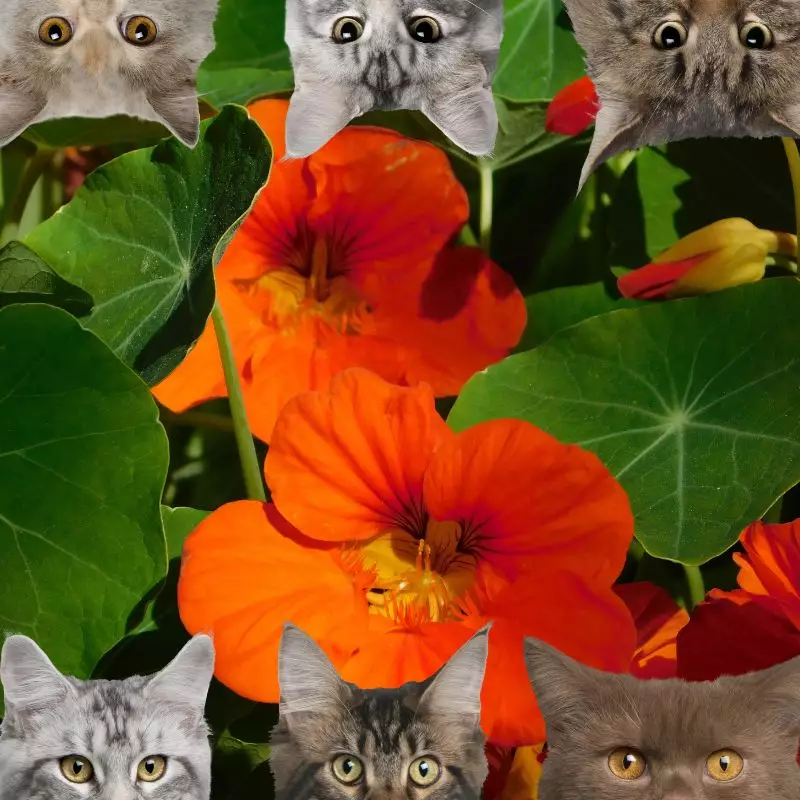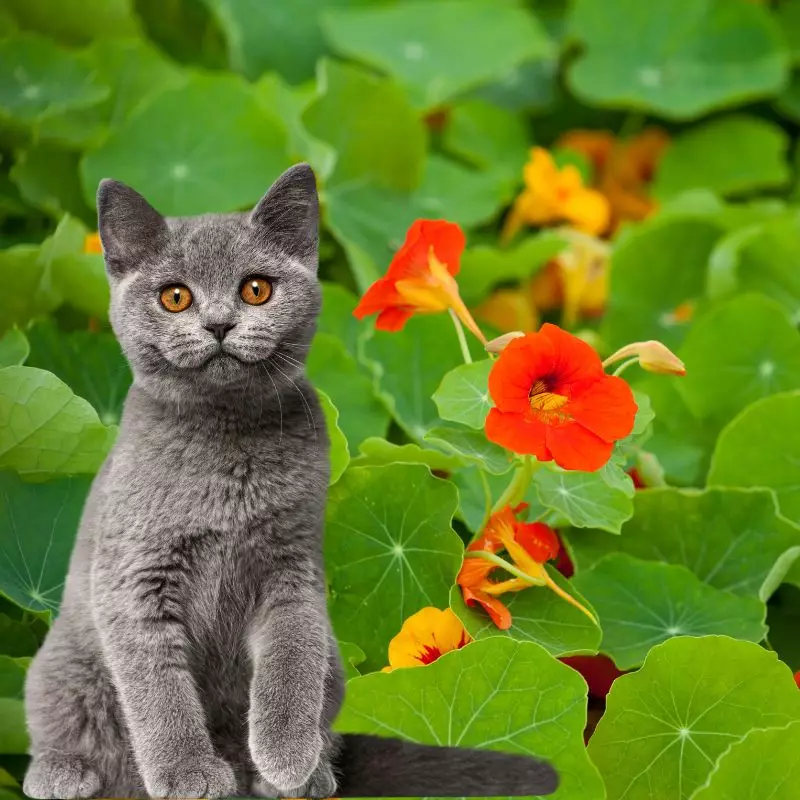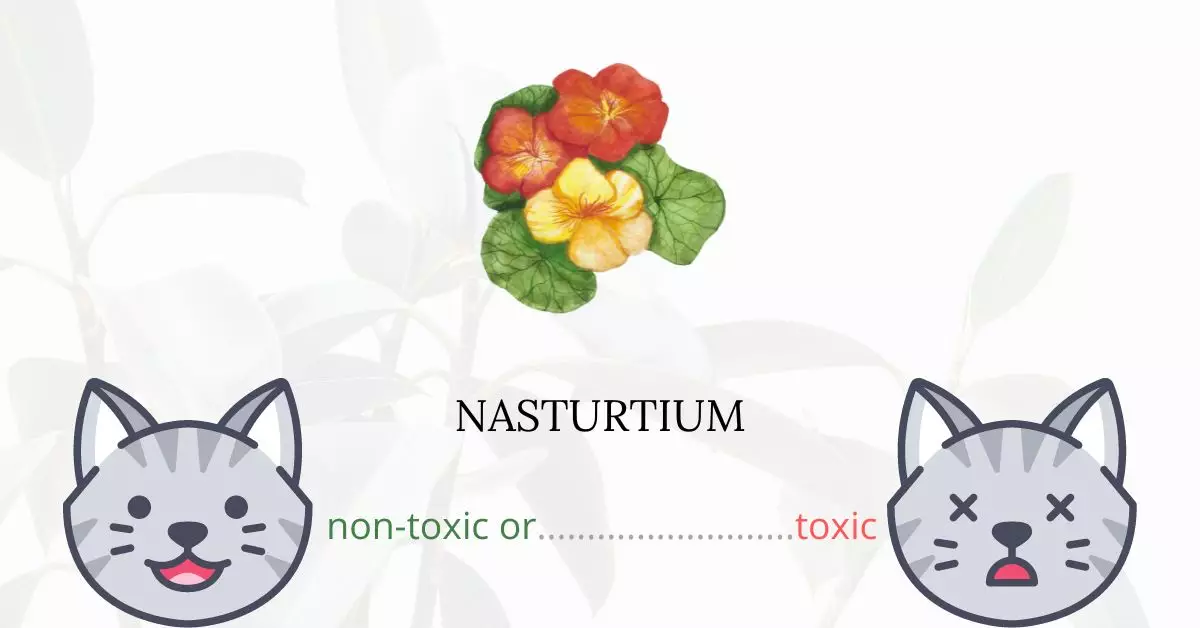Nasturtium, also known as Nose Twister, is not toxic to cats.
To ensure the accuracy and reliability of this information, this article was written in collaboration with a team of experienced DVMs (doctors of veterinary medicine). Their expertise and contributions provide accurate and up-to-date insights into the potential risks associated with various plants, including Nasturtium, and their effects on cats. Our research is also grounded in high-authority sources, with both the ASPCA (American Society for the Prevention of Cruelty to Animals) and PetMD listing Nasturtium as non-toxic to cats.
While Nasturtium is safe for felines, it’s always prudent to exercise caution and ensure that cats don’t ingest or interact excessively with any plant.
Can Cats Eat Nasturtium or Nose Twister?

If we are talking about a small portion of nasturtium, then, there is no need to freak out. Since there are no harmful substances found in nasturtium, it wouldn’t harm your cat to have a single bite of this plant.
However, overeating nasturtium or any kind of plant will cause cats to have an upset stomach. This condition may include showing symptoms such as vomiting, abdominal pain, and diarrhea. The symptoms will typically go away once the feline has eliminated all the plant materials from his body so you shouldn’t worry too much.
What is Nasturtium or Nose Twister?

Nasturtium or nose twister, scientifically known as Tropaeolum majus, is a flowering plant in the Tropaeolaceae family that originated in the Andes from Bolivia to Colombia.
It is a cultivated, possibly hybrid, annual, or short-lived perennial with disc-shaped leaves and vivid orange or red blooms. You should not confuse it with the Nasturtium genus (which includes watercress) as they are not related, and the latter is actually harmful to cats.
Nasturtium leaves exhibit the lotus effect, in which rainfall falls on the surface and condenses into globular droplets that roll off the leaf, leaving it dry and clean. The blooms are 2.5-6 cm in diameter, with five petals, eight stamens, and a 2.5-3 cm long nectar spur at the back; they are frilled and frequently darker at the base of the petals, and they range from yellow to orange to red. The fruit is 2 cm wide and three-segmented, with a single big seed 1-1.5 cm long in each segment.
Nasturtium is also known for its other common names such as Indian cress, monks cress, garden nasturtium, nose twister, and nose-tweaker.
Keeping Cats Away From Nasturtium or Nose Twister

You may try spreading cat repellant in the area and hoping for the best, or you might consider placing chicken wire on top of your dirt. The chicken wire discourages cats from scratching and digging in the dirt, preventing them from utilizing it as a litter box. Similarly, cats tend to avoid regions that have been mulched with stone, pebbles, or similar materials.
You could also make an outside litter box for your cats. Feline favorites include mint, honeysuckle, and catnip. Plant some of them and place a small sandbox nearby. You’ll have to clean up and properly dispose of cat feces, but it could keep your kitty pal away from your plants.
Plants to Avoid For Your Cats
If you are a cat owner and unsure if the plants growing in your yard are harmful to your cats, check out this list of toxic plants for cats. You can also check our list of non-toxic plants for cats.





